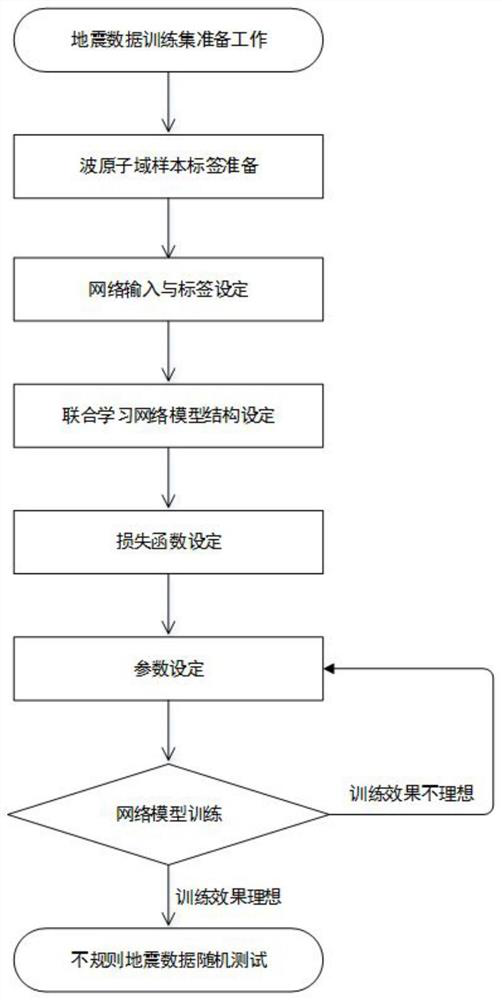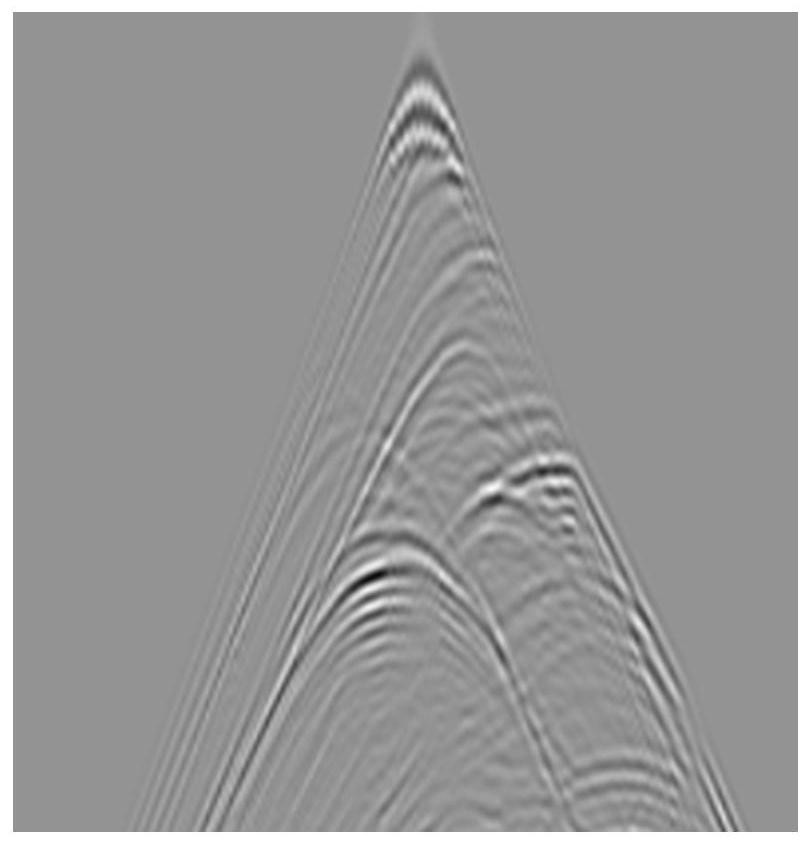Anti-aliasing seismic data regularization method based on deep learning based on wave-atom transformation
A technology of seismic data and deep learning, applied in neural learning methods, pattern recognition in signals, instruments, etc., can solve problems such as insufficient spatial domain feature extraction, too smooth regularization results, ignoring good features of seismic data, etc., to achieve Improve generalization ability and convergence ability, improve accuracy and generalization ability, and maintain regularization effect
- Summary
- Abstract
- Description
- Claims
- Application Information
AI Technical Summary
Problems solved by technology
Method used
Image
Examples
Embodiment 1
[0052] refer to figure 1 and figure 2 , a deep learning anti-aliasing seismic data regularization method based on wave-atom transformation, characterized in that: the seismic data regularization method comprises the following steps:
[0053] Step 1. Training data set preparation:
[0054] Perform spatial transformation processing on the seismic data samples in the training set, including rotation angle and mirror flip, increase the sample data of the data set, and cut the sample data into slice data x with a size of 256×256 as the smallest unit of training samples;
[0055] Irregular seismic data is simulated by extracting seismic traces with a ratio of r from the complete seismic data as empty traces. The extraction method is to simulate three kinds of irregularities by using the methods of complete random extraction, partial random extraction and uniform extraction respectively. To simulate the irregularity of collecting bad sectors, randomly extract some areas to simulat...
Embodiment 2
[0083] refer to Figure 3-12 , the training of the convolutional network model in this method mainly includes two parts: forward propagation of data and back propagation of error. First, set the parameters of the model training, initialize the weight W and bias b of each layer of the network; then carry out the forward propagation process of the model training, and use the irregular data y as the feature input of the network model. Each input goes through convolution, batch normalization, and activation operations and then enters the next layer. The output of each layer is the input of the next layer. After the output of the model is obtained, the backpropagation operation is performed, and the The output of the model is compared with the label to obtain the error between the two, and the weight and bias of the model are adjusted through the Adam optimization algorithm until the convergence condition is met, the training of the network model is ended, and the trained network m...
PUM
 Login to View More
Login to View More Abstract
Description
Claims
Application Information
 Login to View More
Login to View More - R&D
- Intellectual Property
- Life Sciences
- Materials
- Tech Scout
- Unparalleled Data Quality
- Higher Quality Content
- 60% Fewer Hallucinations
Browse by: Latest US Patents, China's latest patents, Technical Efficacy Thesaurus, Application Domain, Technology Topic, Popular Technical Reports.
© 2025 PatSnap. All rights reserved.Legal|Privacy policy|Modern Slavery Act Transparency Statement|Sitemap|About US| Contact US: help@patsnap.com



